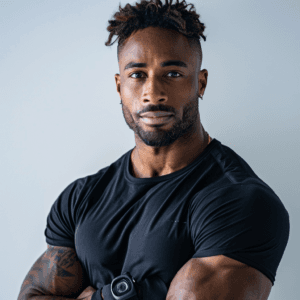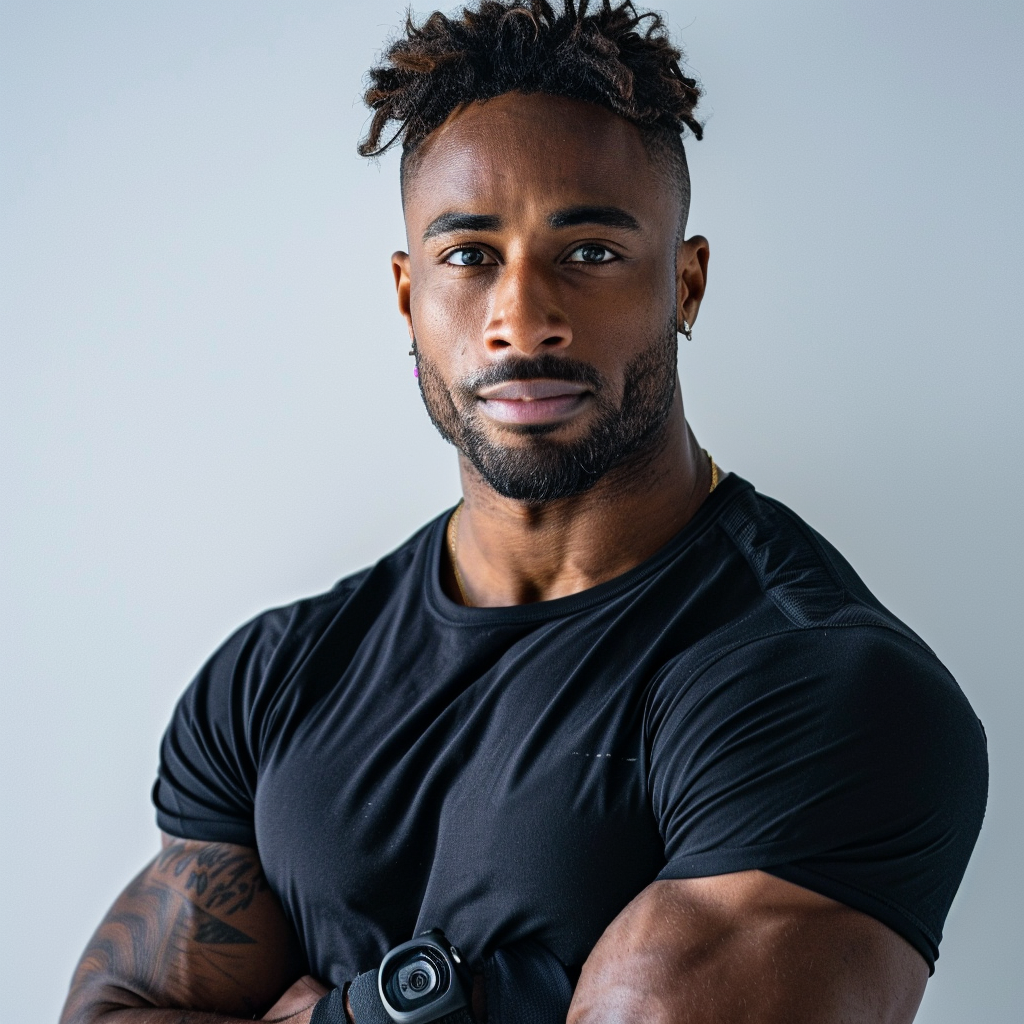




Fitness goals and body aesthetic aspirations often go hand-in-hand, as we strive to achieve our dream physique while maintaining an active lifestyle and a healthy body. For many women, this includes balancing a conventionally feminine appearance with building muscle for a toned, fit figure. While broad shoulders can be a great feature and should be embraced, some may prefer a more toned, leaner look. So here comes upper body workout for women with broad shoulders.
If you’re one of those women, we’ve got the ultimate guide to help you reduce the appearance of broad shoulders, with effective exercises and workout tips to incorporate into your routine and achieve your desired look.
Anatomy of the Shoulder Muscles

The anatomy of the shoulder involves several key muscles and structures that allow for a wide range of motion and play a key role in creating broad shoulders. The deltoid muscle, which consists of three parts — the anterior (front), lateral (side), and posterior deltoids (rear) — plays a primary role in lifting and rotating the arm. The upper arm bone (humerus) connects to the scapula through the glenohumeral joint, playing a crucial role in the overall mobility and function of the shoulder region [1].
The anterior deltoid (front) helps with movements like pressing, while the posterior deltoid (rear) assists in moving the arm backward. Together, these muscles work to move the arm across all planes, performing actions such as flexion, extension, and rotation.
In addition to the deltoids, the rotator cuff (supraspinatus, infraspinatus, teres minor, and subscapularis) stabilizes the shoulder joint, ensuring smooth and secure movements. Shoulder exercises like lateral raises target the lateral deltoid for broader shoulders while incorporating overhead presses and rear flys can help activate all three deltoid heads for overall shoulder development [2].
What Causes Broad Shoulders?

The appearance of broad shoulders is primarily influenced by genetics, particularly the length of the clavicle (collarbone). A longer clavicle, which is more common in men, tends to create a wider shoulder frame. This genetic trait is the key factor in determining whether your shoulders will appear broad or narrow [3].
Besides genetics, there are other factors that can contribute to the width of the shoulders. Muscle hypertrophy, or the growth of muscle tissue, plays a significant role. Shoulder workouts like lateral and front raises can help build the deltoid muscles, leading to thicker, more prominent shoulders [4].

Athletic activities that involve throwing motions can also contribute to shoulder development. These sports activate and strengthen the shoulder muscles, encouraging growth and enhancing shoulder width.
Body fat distribution can influence the perceived width of the shoulders. A higher body fat percentage may give the shoulders a broader appearance while reducing body fat through exercise can create a leaner, more sculpted look [5].
Hormones, especially testosterone, also affect shoulder size. Testosterone, which is typically higher in men, helps promote muscle growth and repair, making it easier to develop broader shoulders [6].

Upper Body Exercises to Focus On to Reduce Broad Shoulders
Here is a diverse list of exercises you can focus on that can help with minimizing the appearance of broad shoulders:
1. Push-Ups
It’s still possible to continue upper body workouts for women with broad shoulders as you choose those that won’t lead to excessive bulking. Bodyweight exercises like push-ups are a great example of that:

Instructions:
- Start: Place your hands slightly wider than shoulder-width apart, body in a straight line from head to heels. Engage your core and glutes.
- Lower: Bend your elbows to lower your chest just above the ground, keeping elbows at a 45-degree angle.
- Push Up: Press through your palms to lift your body back to the starting position.
- Breathing: Inhale as you lower, exhale as you push up.
2. Bicep Curls
Here’s yet another example of arm and shoulder exercises that you don’t have to give up in order to make your shoulders smaller. Bicep curls can help you maintain stronger shoulders while also supporting muscle toning and fat loss instead of highlighting muscle mass too much.

Instructions:
- Start: Stand with feet shoulder-width apart, holding a dumbbell in each hand with palms facing forward and arms fully extended.
- Curl: Keep your elbows close to your torso and curl the dumbbells towards your shoulders by bending your elbows. Focus on squeezing your biceps as you lift.
- Lower: Slowly lower the dumbbells back to the starting position, fully extending your arms.
- Breathing: Exhale as you curl the weights up, and inhale as you lower them.
3. Lat Pulldown
By targeting the latissimus dorsi muscles, also known as lats, which are part of your back, you can create the appearance of a tapered and more narrow upper body. This can help with balancing out how broad your shoulders might look.

Instructions:
- Set Up: Sit at the machine, adjust thigh pads, and grasp the bar with a wide overhand grip.
- Position: Keep your chest lifted, feet flat, and core engaged.
- Pull: Inhale and pull the bar down to your chest, leading with your elbows, squeezing your shoulder blades together.
- Return: Slowly extend your arms to return the bar to the starting position.
- Repeat: Perform the desired reps with controlled motion.
You may also like: 10 Best Lat Exercises For Building A Stronger Back
4. Plank Shoulder Taps
This is one of the upper body exercises on the list that stays away from the shoulders and mainly focuses on the core. This exercise helps with improving your posture and enhancing shoulder stability without emphasizing the shoulder muscles.

Instructions:
- Start in Plank: Begin in a high plank position with your hands under your shoulders, body in a straight line, and core engaged.
- Tap: Lift your right hand off the ground and tap your left shoulder.
- Alternate: Return your right hand to the ground, then lift your left hand and tap your right shoulder.
- Repeat: Continue alternating taps while keeping your hips stable.
4. Squats
Incorporating lower body exercises into your routine that can work on muscle groups like the glutes, hips, and legs will help with developing a more refined lower body. Squats can give you a more balanced look that’s proportionate to your shoulder muscles and upper body.

Instructions:
- Stand Tall: Place your feet shoulder-width apart with toes slightly pointed outward.
- Engage Core: Tighten your core and keep your chest lifted.
- Bend Your Knees: Slowly lower your hips as if sitting back into a chair, keeping your knees aligned with your toes. Ensure your knees don’t extend past your toes.
- Lower Your Body: Go down until your thighs are parallel to the ground or as low as comfortable while maintaining a neutral spine.
- Push Through Heels: Press through your heels to stand back up, straightening your legs while squeezing your glutes at the top.
- Repeat: Perform for the desired number of reps.
You may also like:
Power Of The Asian Squat: What Is It and Can Everyone Do It?
How To Do Kneeling Squat Effectively
5. Lunges
It helps improve overall posture and also helps with developing the lower body for a more proportionate look.

- Stand tall with feet hip-width apart.
- Step forward with one leg, lowering your hips until both knees bend at 90°.
- Keep the front knee aligned with the ankle, and back knee hovering above the floor.
- Push back to the starting position.
- Repeat on the other leg.

Learn about the right exercises for your body types:
The Mesomorph Body Type: Best Exercises for Your Build
9 Best Exercises to Achieve an Hourglass Body Shape
Tips to Achieve a Narrower Upper Body for Women

So what are other strategies you can actively incorporate in your daily life in order to reduce the appearance of broad shoulders? We’ve rounded up some helpful tips for you:
- Stay Away from Shoulder Isolation Exercises: Minimize exercises like lateral raises and overhead presses that target the shoulders. Instead, focus on compound exercises like pendlay row and deadlifts that engage the shoulders without adding bulk.
- Incorporate Higher Reps, Lighter Weights: Use lighter weights with higher reps (15+), focusing on endurance rather than hypertrophy to avoid increasing shoulder size.
- Focus on Lower Body Development: Building muscle in your lower body (e.g., squats, deadlifts, hip thrusts) helps create a balanced physique and shifts attention away from your shoulders.
- Engage in HIIT and Cardiovascular Workouts: High-intensity interval training (HIIT) and regular cardio (running, cycling, swimming) help reduce overall body fat, promoting a leaner physique and minimizing the appearance of broad shoulders [7].
- Mind Your Diet: A balanced diet with sufficient protein and controlled calorie intake supports fat loss and muscle toning, helping reduce shoulder width.
- Monitor Training Frequency: Limit shoulder-specific workouts to once a week to prevent excessive muscle growth, while still maintaining strength for everyday activities.
- Maintain a Healthy Weight: Achieving a calorie deficit through diet and exercise helps reduce body fat, revealing leaner muscles and making shoulders appear less broad. Calculate your daily intake through our Calorie Calculator.
- Improve Posture: Strengthening the upper back and core can help improve posture and create a more streamlined appearance.
- Style Tips: Wear V-neck tops, dark colors on the upper body, and avoid shoulder pads or tight-fitting shirts to visually narrow your shoulders.
Conclusion
We hope that this article has been informative in upper body workout for women with broad shoulders – guiding you on the many different strategies you can execute in order to achieve the appearance of leaner and toned shoulders. It’s important to know that beauty standards are fragile and a healthy and fit body is the priority, so whatever look you wish to obtain must come from your own needs and desires. For more workouts and tips for an effective routine, check out the JustFit app!
For more workout tips:
Should You Workout When Sore? Everything You Need To Know About It
What To Eat Before A Workout: A Useful Guide For Morning Workouts
How to reduce broad shoulders in females?
How can I look feminine with broad shoulders?
Is having broad shoulders a good thing for a girl?
What makes a shoulder broad?
Campos, Y. A. C., Vianna, J. M., Guimarães, M. P., Oliveira, J. L. D., Hernández-Mosqueira, C., da Silva, S. F., & Marchetti, P. H. (2020). Different Shoulder Exercises Affect the Activation of Deltoid Portions in Resistance-Trained Individuals. Journal of human kinetics, 75, 5–14. Available at: https://doi.org/10.2478/hukin-2020-0033
Eyler, S. (2024, March 20). How to target all three shoulder heads for maximum results. Powertec. Available at: https://powertec.com/blogs/power-up-blog/how-to-target-all-three-shoulder-heads-for-maximum-results#:~:text=Can%20I%20target%20all%20three,raises%20and%20rear%2Ddelt%20flyes.
Deltoid muscles: What are they, anatomy, Location & Function. Cleveland Clinic. (2024b, May 1). Available at: https://my.clevelandclinic.org/health/body/21875-deltoid-muscles
Khodadadi, F., Bagheri, R., Negaresh, R., Moradi, S., Nordvall, M., Camera, D. M., Wong, A., & Suzuki, K. (2023). The Effect of High-Intensity Interval Training Type on Body Fat Percentage, Fat and Fat-Free Mass: A Systematic Review and Meta-Analysis of Randomized Clinical Trials. Journal of clinical medicine, 12(6), 2291. Available at: https://doi.org/10.3390/jcm12062291
Laudicina, N. M., & Cartmill, M. (2023). Clavicle length and shoulder breadth in hominoid evolution. Anatomical record (Hoboken, N.J. : 2007), 306(8), 2090–2101. Available at: https://doi.org/10.1002/ar.25144
Loomba-Albrecht, L. A. (n.d.). Fat mass. Fat Mass - an overview | ScienceDirect Topics. Available at: https://www.sciencedirect.com/topics/immunology-and-microbiology/fat-mass
Vingren, J. L., Kraemer, W. J., Ratamess, N. A., Anderson, J. M., Volek, J. S., & Maresh, C. M. (2010). Testosterone physiology in resistance exercise and training: the up-stream regulatory elements. Sports medicine (Auckland, N.Z.), 40(12), 1037–1053. Available at: https://doi.org/10.2165/11536910-000000000-00000





